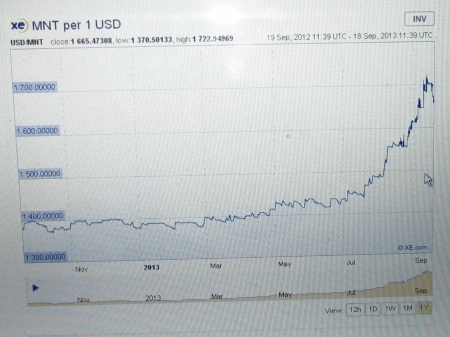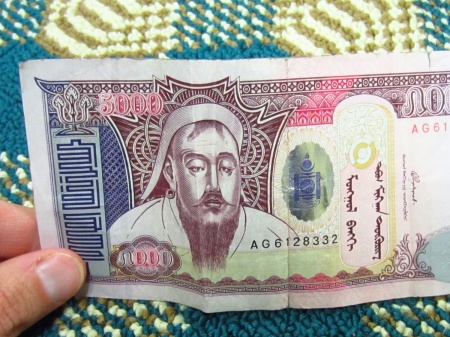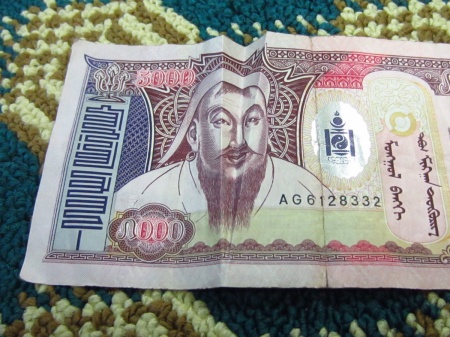Cell phones in Mongolia are pay-as-you-go rather than by monthly plan. Peace Corps provided our mobile phones, but we are responsible for adding нэгж (negj or phone units). The expected cost is built in to our monthly stipend; I spend about 5,000 tugricks ($3) per month on negj, probably below average among PCVs. You can buy negj from almost any delguur (store). You can also get unlimited plans from the branch (e.g., Mobicom, G-Mobile) directly. Mostly, I think people go to the stores. Usually, the store has extra negj loaded onto their phone and they transfer to your phone and you get at least three text messages immediately confirming the amount. Another way you can get negj is by a little scratch ticket sold at the store. These come in denominations of 1,000 tugricks and 5,000 tugricks (maybe higher, I don’t know). You scratch off the code and type it into your phone and send. And, if you run out of negj at an inconvenient time, you can type in a code for an emergency 500 negj, and the next time you load up, they’ll deduct 550.
Nearly everyone texts, since it is cheaper than talking. Personally, I still really don’t like texting when it’s used for conversation. For a one-way message (“There’s cheese at the cheese store!” or “I’ll be a bit late to club.”), I don’t mind.
Curiously, many Mongolians have more than one phone. In my department, only the director has an office phone. All of the other education specialists use their cell phones, but I don’t think their different phones are specific to work or personal life. Also, it’s not uncommon for people to take calls in the middle of a meeting; or for teachers to answer a call in the middle of class.
Very young children in Mongolia have cell phones. I’m talking 6, 7, 8 years old is not unusual. Many high school students have smart phones and some will boldly listen to music or play games during class. And some will use their phone to access an English-Mongolian dictionary ap. In classes where there is a shortage of books, students will pass their phones around and photograph the page with the lesson, then use their phones to zoom in on the text. Talk about resourceful!
Mongolians have embraced all that modern technology to the point that flat screen televisions inside gers are almost expected. So, it was really surprising that one of the textbooks includes a lesson on electronic gadgets. That there was such a lesson wasn’t surprising, but that the lesson listed camcorder, electronic dictionary, PDA, GPS, and last but not least, pager, was quite amusing. Though I told the teacher these were outdated terms, replaced by today’s all-in-one gadgets, she was insistent on teaching the lesson as is. And, let me tell you, explaining to these kids in English how a pager worked would probably be the same as explaining it to American kids in Mongolian.
I leave you with this lovely image of a fellow PCV, Kevin, who confiscated 5 phones in one of his classes. Not sure I’d know how to use one of these.




 Posted by eelevol
Posted by eelevol 

